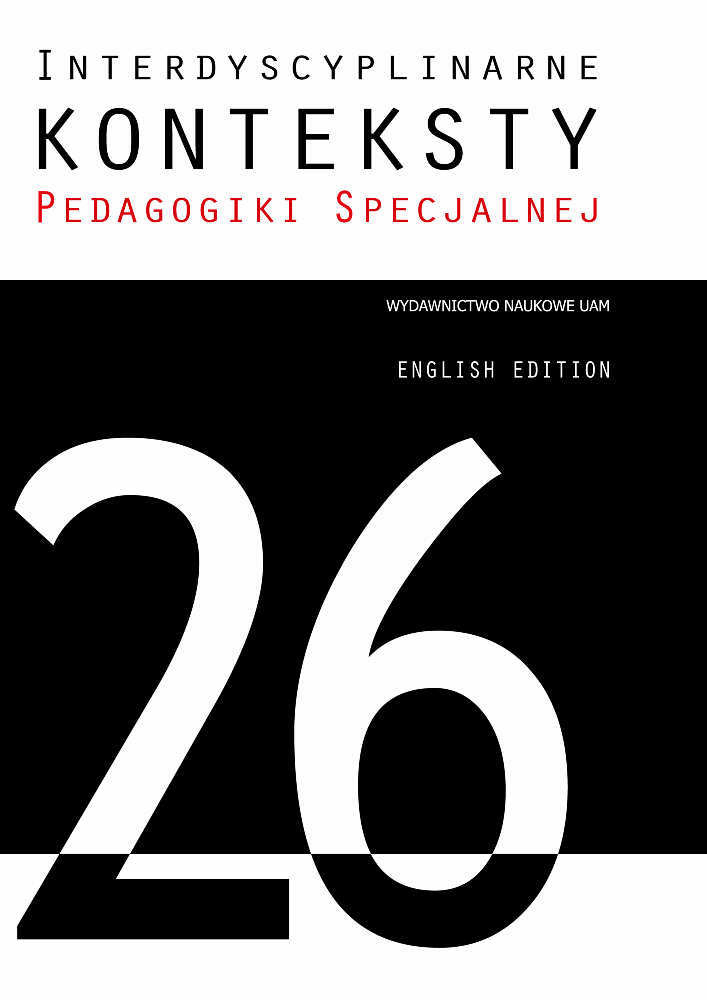Abstract
The Israeli educational system is dealing intensively for the last two decades in the assimilation of the inclusion approach of student with special needs (SwSN) in general education. The first part of the article presents the historical development of special education in Israel as a background to the presentation of the new amendment of Special Education Law – Amendment 11 (2018). The current stage of the Eleventh Amendment implementation aims to ensure the inclusion of SwSN in the general education by an allocation of budget for his needs according to a standard assessment of his functioning level, in addition to his disability. The SwSN parents’ will decide about their child placement according to the model of “The Parents’ Choice”, and the student’s budget will be transferred to the chosen educational framework according to the “Funding Follows the Child” principle. The second part of the article presents a case study of special education school in Israel for students with intellectual developmental disabilities that gradually assimilate the spirit of the law amendment from both aspects – standard assessment of the students functioning and parental partnership, as part of professional work processes carried out at school in Activities of Daily Living (ADL) field.
References
Avissar G., Inclusion and accessibility: Curriculum planning and implementation for students with disabilities, Mofet Institute, Tel Aviv, 2010. [Hebrew]
Avissar G., Bab Ts., Processes and trends in the planning of the studies in Israel for students with disabilities, Theory and Practice in the Planning of the Studies, 2010, 21. [Hebrew]
Avissar G., Moshe A., Licht P., “These are basic democratic values”: The perceptions of policy makers in the Ministry of Education with regard to inclusion, [in:] Inclusiveness: From theory to practice, eds S. Reiter, G. Avissar, AHVA Publishers, Haifa, 2013. [Hebrew]
“Assif”, a collection kit for the „transition” program for special needs students studying in special education frameworks, ages 16–21, Ministry of Education, Special Education Department, 2012. [Hebrew]
Blass N., Laor A., Special education in Israel and the policy of inclusion. The Center for the Research of Social Policy in Israel Press, Jerusalem 2002. [Hebrew]
Crockett J.B., Kauffman J.M., The least restrictive environment. Lawrence Erlbaum, New Jersey 1999.
Dorner Committee, Report of the Public Committee for the Examination of the Special Education System in Israel, Ministry of Education, Jerusalem, 2009. [Hebrew]
Harpaz Y., Every Student Is a Student with Special Needs, Hed Hahinuch, Echo of Education, 2013, 87(6). [Hebrew]
Howard P., The Least Restrictive Environment: How to tell, Journal of Law & Education, 2004, 33.
Margalit Committee, Report of the Committee for the Examination of the Realization of the Ability of Students with Learning Disabilities. Ministry of Education, Culture, and Sport, Department of Special Education, Jerusalem 1997. [Hebrew]
Margalit Committee, Report of the Committee for the Examination of the Implementation of the Special Education Law, Ministry of Education, Jerusalem 2000. [Hebrew]
Marom M., Bar-Simon Tov K., Kron A., Koren P., Inclusion of special needs children in the regular educational system: A review of the literature, The Center for the Research of Social Policy in Israel Press, Jerusalem 2006. [Hebrew]
Neon D., Milshtein M., Marom M., Integration of children with special needs in the elementary schools: Follow up after the implementation of the ‘Book of Inclusion’ in the Special Education Law. The Center for the Research of Disabilities and Employment of Special Populations, Jerusalem 2012. [Hebrew]
Nirje B., The basis and logic of the normalization principle, Australia and New Zealand Journal of Developmental Disabilities, 1985, 11(2).
Project protocol WHO and WFOT, Quality assurance project concerning CVApatients, Denmark: The Danish Occupational Therapy Association (1992).
Reiter S., Schanin M., Tirosh E., Israeli elementary school students’ and teachers’ attitudes towards mainstreaming children with disabilities, Special Services in the Schools, 1998, 13(1/2).
Robson C., Students with disabilities, learning difficulties and disadvantages: statistics and indicators. OECD: Organisation for Economic Cooperation and Development, France 2005, 20. ISBN 9264009809.
Ronen H., The future of the special school, Issues in Special Education and Rehabilitation, 2003, 18(1). [Hebrew]
Ronen H., Inclusion: Issues and disputes, [in:] Inclusiveness: Learners with disabilities in education, eds S. Reiter, Y. Leyser, G. Avissar, AHVA Publishers, Haifa, 2007. [Hebrew]
Sachs D., Schreuer N., Adato-Biram I., Academic, physical and human support to promote participation of people with disabilities in higher education, Paper presented at the conference of Council of Occupational Therapists in European Countrives (COTEC), Hamburg, Germany, May 2008.
Sachs D., Yaakobi-Vekert R., Zussman N., A survey of treatment frameworks, methods and assessment methods and treatment which are customary in occupational therapy with patients after a stroke, Israeli Journal of Occupational Therapy, 1995, H147–H127, 4(4).
The Special Education Law, 5748, State of Israel, 1988. [Hebrew]
The Special Education Law 5762 (Amendment No. 7), State of Israel, 2002. [Hebrew]
The Special Education Law 2734 (Amendment No. 11), State of Israel, 2018. [Hebrew]
Students with Disabilities, Learning Difficulties and Disadvantages Policies: Statistics and Indicators OECD: Organization for Economic Cooperation and Development, 2007, 30. ISBN 978-92-64-02762-6.
